
Types of loans you can take out in the USA
They say that necessity forces us, and many times we have to resort to some kind of loan to solve a situation or carry out a project. When there is a financial system that works, you know that you have financing options for different needs. Since credit is abundant in the United States, we will review the most common alternatives to get extra money.
Article content
- Secured and unsecured financing
- Open and closed loans (open-ended and close-ended)
- Conventional loans
- Common types of loans in the USA
If you want to know how a loan works in the USA, considers that this action simply implies receiving an amount of principal with an interest rate and a term to pay. There are them for different purposes, with conditions that vary according to the lender and may or may not be insured.
Knowing the types of loans is important, both for your personal finances and for your financial goals. For now we will leave the “standard” classification and focus on a more general one:
Secured and unsecured financing
When we talk about a secured loan, we refer to an assumed debt that is backed by a good (a house or a car, for example) or for a deposit of money. If for some reason you cannot finish paying, the lender uses that asset to cover its losses. These loans may require an appraisal of the collateral, they finance you the equivalent of said appraisal, and the interests are usually lower.
 Personal loan
Personal loan
- APR: 5.24%
- Minimum term: 12 months
- Deadline: 60 months
- Interest: Consult
- Minimum amount: € 3,000
- Maximum amount: € 100,000
More infoRequest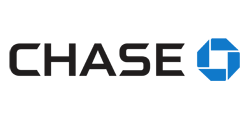 Auto loan
Auto loan
- APR: Consult
- Minimum term: 12 months
- Deadline: 72 months
- Interest: 4.49%
- Minimum amount: € 4,000
- Maximum amount: € 600,000
More infoRequest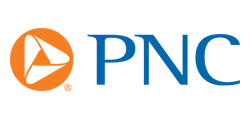 Personal loan
Personal loan
- APR: 5.99%
- Minimum term: Check months
- Deadline: Check months
- Interest: 5.99%
- Minimum amount: € 1,000
- Maximum amount: € 35,000
More infoRequest
On the other hand, it is not difficult to suppose that a unsecured loan it `s the opposite. Since there is no collateral, you depend on the income you currently generate and your credit history to get it. They are often more difficult to obtain and have higher interest rates. When you fall into default or non-payment, the bank resorts to lawsuits or collection strategies.
Open and closed loans (open-ended Y close-ended)
Within this particular classification, we can define each one as follows:
- Open-ended loans. They are known as revolving credits or that you can use over and over again. Frequent examples are lines of credit or credit cards, which have a set limit. You have the option of spending part or all at once. Every time you use a certain amount, the credit decreases. Every time you pay your balance, you have more money to use.
- Close-ended loans. These loans are designed for a specific goal, so you do not have money that you pay and you can use again. Since they have a fixed term, you must pay off the debt to meet the terms. As you pay the monthly payments, the outstanding balance decreases. This is how mortgages, car loans and personal loans work.
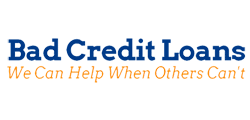
- Bad Credit Loans
- Loan amount: between $ 500 and $ 10,000
- Term: between 3 and 36 months
![]() Request
Request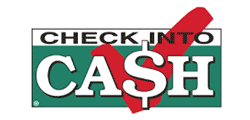
- Check Into Cash
- Loan amount: between $ 50 and $ 1,000
- Term: between 14 and 30 days
![]() Request
Request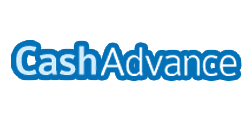
- Cash Advance
- Loan amount: between $ 100 and $ 1,500
- Term: between 1 days and 6 months
Request
Conventional loans
In the United States, the term “conventional”Is linked to mortgages that are not endorsed by the federal government. That is, they are those offered by banks or credit unions and not those of the FHA, RHS, VA or any other agency. These loans can be "conforming”Or not, which implies that they are regulated by Fannie Mae and Freddie Mac or do not meet their criteria.
Common types of loans in the USA
Based on the above, we can draw another more specific classification, which we will summarize in 5 basic sections:
 Quick loans and cash advances (Cash Advance). They are short-lived, offered by credit card companies or other companies, and are easy to obtain. These payday loans they cannot be deducted on the tax return, you get small amounts for minor expenses or emergencies and they have high costs due to their interest rates linked to short terms.
Quick loans and cash advances (Cash Advance). They are short-lived, offered by credit card companies or other companies, and are easy to obtain. These payday loans they cannot be deducted on the tax return, you get small amounts for minor expenses or emergencies and they have high costs due to their interest rates linked to short terms. - Business Credits. Ideal for entrepreneurs, they require the approval of a business plan and are offered by local banks. They are secured loans, the amounts granted vary from thousands to even a million dollars and can give you up to 25 years to pay. The interest rate varies and it is possible to negotiate it.
- Home equity line of credit (HELOC). Known as Home Equity Line of Credit, works like a revolving credit just like a credit card. You are asking for money based on the value of your house, so you get a set limit. You have 10 to 20 years to use the financed amount and it may be tax deductible.
- Home equity loan. Home Equity Loans are financings supported by the value of your home with respect to the market. The terms are much like a mortgage, with 15-20 years to pay, relatively low rates, and tax deductible. They are often used for remodeling, debt consolidation and other major expenses.
- Mortgages (Mortgages). They are loans designed to finance the purchase of a home, in which the value of the house is also used as collateral. There are many types of mortgages, such as fixed, variable,
jumbo loans, those endorsed by federal institutions, etc.
- Personal loans. Also called consumer or personal loans, are financing, insured or not, that can be used for any purpose. Loan amounts can range from a few hundred to a few thousand dollars, usually require fixed income or verification of other assets, have higher rates, and are approved in a few days.
There are many types of loans available that you can find in the Hispanic Business Blog search / comparator. Here you have accurate and up-to-date information on all banking products in the US.
Leave a Reply
You must be logged in to post a comment.


Tambien puedes leer: